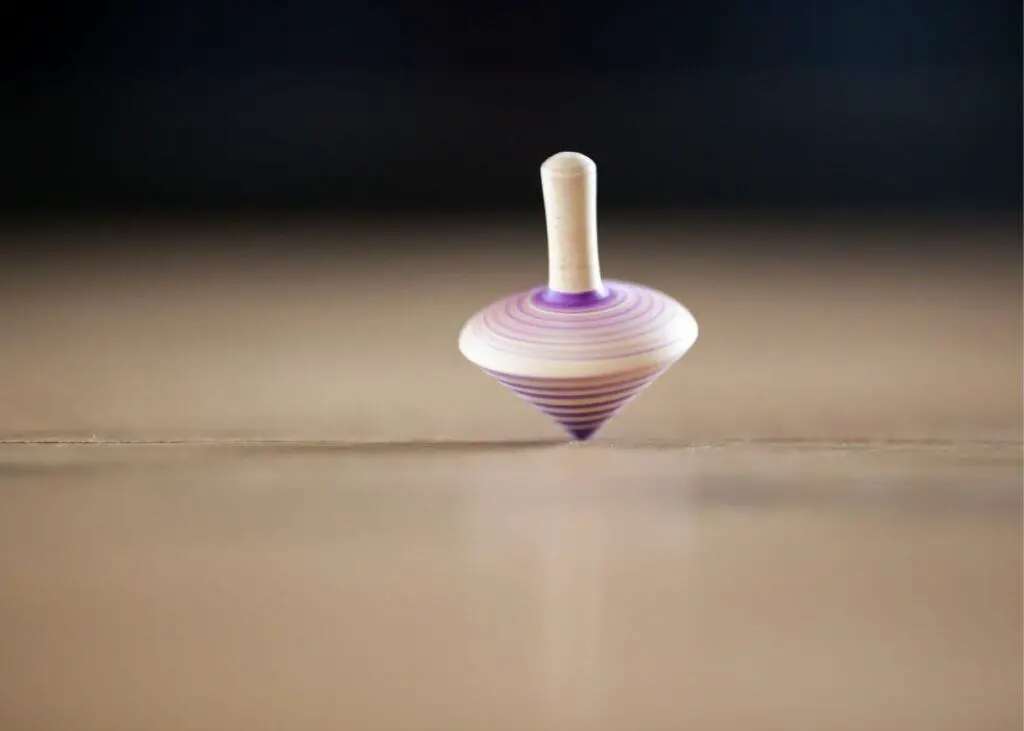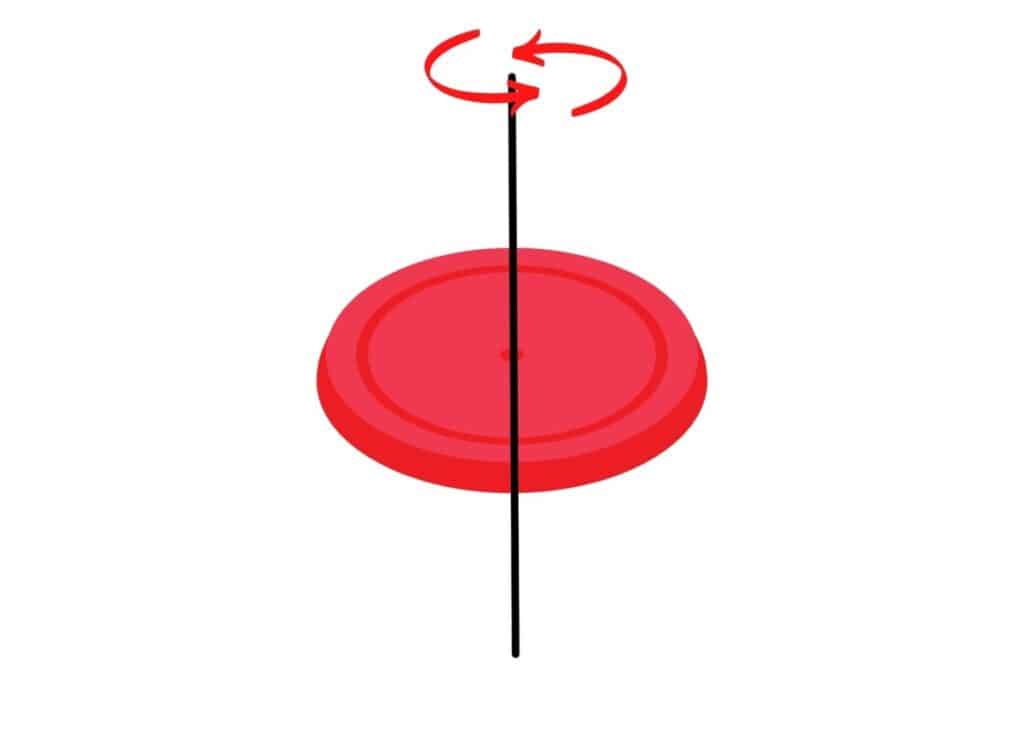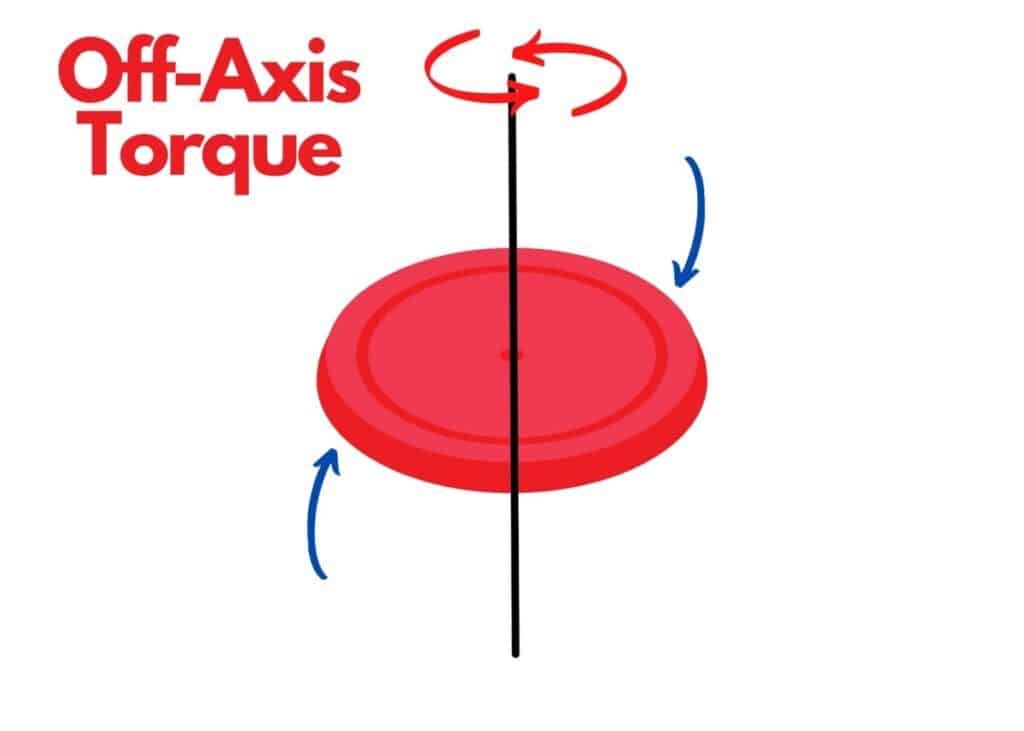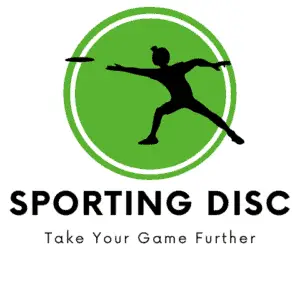OAT is another acronym used in disc golf that can be super confusing for beginners that are just learning the game.
OAT is a very important term to know for a beginner because it describes a problem with your throws that is easily fixable if you know what causes it.
Table of Contents
Here is what OAT Stands For in Disc Golf
OAT is disc golf stands for “off-axis torque”. What this means is that when a disc is thrown it will flutter or wobble in the air. Off-axis torque is caused by any force that’s disrupting or destabilizing the angle that the disc is spinning on. This could be caused by improper grip or poor follow-through.
In this article, I’ll explain what OAT is, how it can negatively affect your game, and how to fix it.

What Causes Off-Axis Torque?
Off-axis torque or OAT is a complicated way to say that there is some force being applied to the disc that does not allow for clean rotation of the disc.
In the case of disc golf, that force is usually up or down on the disc. That force will destabilize and create that familiar fluttering when the disc is thrown.
This up or down force on the rotating axis of the disc is what causes the wobble in the air.
To further illustrate the point, think of an imaginary line running straight through the middle of the disc. The disc is spinning on that axis. This is shown in the picture below.

When the disc is spinning cleanly on this axis then there would be no wobble. When you do something to add a force either up or down on the disc, this causes the disc to destabilize and creates the off-axis torque that makes for a wobbly disc.

Why is Off-Axis Torque (OAT) Bad?
A disc that is flying off-axis will flutter in the air. This fluttering or wobbling is bad because it will destabilize the disc while in flight, create drag, and cause the disc to be more or less overstable than it would if it was thrown cleanly.
A disc can wobble when driving, laying up, or on any type of throw. Off-axis torque can affect your game from driving to putting.
You would notice right away that OAT will decrease the distance of your drive, or diminish the consistency and accuracy of putting.
When the wobble of a disc starts to negatively affect your ability to make shots that you’d normally make, it’s time to implement some changes to fix off-axis torque and get back to normal.
How You Can Fix OAT in Disc Golf
Below are some common fixes that can be used to cure off-axis torque when throwing a disc backhand. These can apply whether you throw RHBH or LHBH.
1. Change How You Grip the Disc
There are many different ways you might grip the disc when throwing backhand. It’s hard to say that one particular grip will solve all your issues.
But, if you’re having some off-axis torque issues when throwing backhand, the grip you’re using might be a factor.
Here are some rules of thumb to consider for grip.
- Use all four fingers to grip the disc on the underside.
- Place your thumb on top of the disc, but just behind the rim on the underside of the disc.
You’ll find that most players (and most professionals) are using some variation of the power grip for throwing backhand.
It’s worth tweaking your grip to see if this will solve your off-axis torque issues.
2. Increase Disc Spin
For the disc to maintain a stable flight path, the disc needs to have enough spin. This can be described as gyroscopic stability.
All that means is that the faster the disc spins, the stability or the ability for the disc to maintain stability is also increased.
One way to create more spin for a backhand throw is to place your hand on the outside rim of the disc and raise your elbow when throwing the disc.
This motion will create more spin as you unfurl your arm and hand to release the disc in flight.
3. Practice Follow-Through
Off-axis torque is primarily caused by artificially adding some force or torque to the disc that alters its intended path to flight.
Follow-through is an area to focus on to solve this issue. You want to concentrate on maintaining the same plane from start to finish.
Maintaining the same plane for the disc to travel will ensure that there is nothing to impede the spin of the disc.
For example, throwing a hyzer shot, you’ll want to follow through up. Throwing the disc flat means you need to follow through straight across your body.
Off-Axis Torque Disc Golf Forehand
In disc golf, when throwing forehand, the most common issue that causes off-axis torque is how you are releasing the disc.
Many players will roll their wrists at the release point. What this does is create a last-second downward force on the disc that makes it flutter or wobble right as it leaves your hand and takes flight.
One way to solve this issue is to concentrate on your forehand grip.
If you’re using your index and middle fingers to grip on the underside of the disc, be sure that the pads of your fingers are following the contour of the disc.
This will ensure that your hand is sideways into the disc instead of vertically.
The final common error is not keeping your thumb facing up. If your thumb is facing up, there is little chance for your wrist to roll over at the release point.
Final Thoughts | What Does OAT Stand For in Disc Golf
OAT or off-axis torque can be tricky to pinpoint to fix this common mistake if you’re relatively new and learning disc golf.
But, it all starts with actually knowing what OAT is and why it’s happening in the first place. Once you understand the reasons behind OAT, it’s easier to determine what might be causing it and fix those problem areas.
